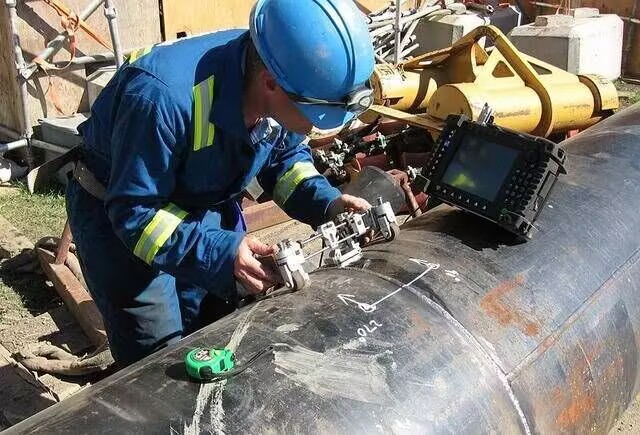Non-destructive testing (NDT) is a method to detect and evaluate the internal structure, material properties and defects of the object under test without damaging its integrity. This detection method can quickly and accurately find potential problems without affecting the use and life of the product, so as to ensure the quality and safety of the product.

The following introduces several common non-destructive testing methods for
seamless steel pipes:
Ultrasonic Inspection (UT)
Principle: The use of ultrasonic propagation in the material encountered defects (such as cracks, inclusions) will occur reflection, scattering or attenuation characteristics, by receiving the echo signal to judge the location and size of the internal defects.
Advantages: large detection depth, high precision, fast speed; Suitable for detecting tube wall thickness, cracks and internal defects.
Application: Widely used in seamless steel pipe wall thickness measurement, internal defect detection and weld quality assessment.
Radiographic Inspection (RT)
How it works: X-rays or gamma rays are used to penetrate the material to form an image on film or a digital detector. Defects inside the material can cause a difference in the rate of radiation absorption, which can show dark or bright areas on the image.
Advantages: It can visually display the position and shape of internal defects; It is suitable for the inspection of pipes with large thickness.
Limitations: Radiation protection is required, and the operating environment and cost requirements are high.
Magnetic Particle Detection (MT)
Principle: It is suitable for magnetic materials, which will be magnetized in the detected area, and a magnetic leakage field will be generated at the defect. After the magnetic powder is applied, the magnetic powder is attracted to the defect by the magnetic field, and an obvious abnormal pattern is formed.
Advantages: Simple operation, low cost, sensitive to surface and near-surface defects.
Application: Often used to detect seamless steel pipe surface and near surface cracks, inclusions and other defects.
Liquid Penetration Testing (PT)
Principle: The specific dye or fluorescent liquid is coated on the surface of the clean material, the liquid penetrates into the interior through the surface defect, after a period of time, the surface residual liquid is removed, and then the developer is used to show the liquid traces of penetration.
Advantages: Sensitive to fine surface defects, low cost of testing equipment.
Limitations: Only applicable to surface or near-surface detection, and the surface to be detected must be sufficiently smooth.
Eddy Current Testing (ET)
Principle: Using the principle of electromagnetic induction, when the high-frequency AC current through the detection probe generates an alternating magnetic field, it will induce eddy currents in the conductive material. When there is a defect in the material, the eddy current distribution will be abnormal, and the defect situation can be judged by the signal change detected by the probe.
Advantages: Suitable for detecting surface and near-surface defects, fast response speed, suitable for online detection.
Limitations: Affected by the conductivity of the material, mainly used in metal materials; Detection depth is limited.
Through these non-destructive testing methods, manufacturers can find defects inside and on the surface of seamless steel pipes in a timely manner during the production process, ensuring product quality meets design requirements, and thereby improving the safety and reliability of piping systems.
CENTRAL STEEL is a leading manufacturer, exporter, and stockist of steel pipes and fittings in China.
